Title Page
Foreword
Preface
Acknowledgments
1 Introduction to Reflectarray Antennas
1.1 Reflectarray Concept
1.2 Reflectarray Developments
1.3 Overview of this Book
References
2 Analysis and Design of Reflectarray Elements
2.1 Phase‐Shift Distribution on the Reflectarray Aperture
2.2 Phase Tuning Approaches for Reflectarray Elements
2.3 Element Analysis Methods
2.4 Examples of Classic Reflectarray Elements
2.5 Reflectarray Element Characteristics and Design Considerations
2.6 Reflectarray Element Measurements
References
3 System Design and Aperture Efficiency Analysis
3.1 A General Feed Model
3.2 Aperture Efficiency
3.3 Aperture Blockage and Edge Diffraction
3.4 The Analogy between a Reflectarray and a Parabolic Reflector
References
4 Radiation Analysis Techniques
4.1 Array Theory Approach: The Robust Analysis Technique
4.2 Aperture Field Approach: The Classical Analysis Technique
4.3 Important Topics in Reflectarray Radiation Analysis
4.4 Full‐Wave Simulation Approaches
4.5 Numerical Examples
References
5 Bandwidth of Reflectarray Antennas
5.1 Bandwidth Constraints in Reflectarray Antennas
5.2 Reflectarray Element Bandwidth
5.3 Reflectarray System Bandwidth
References
6 Reflectarray Design Examples
6.1 A Ku‐band Reflectarray Antenna: A Step‐by‐Step Design Example
6.2 A Circularly Polarized Reflectarray Antenna using an Element Rotation Technique
6.3 Bandwidth Comparison of Reflectarray Designs using Different Elements
References
7 Broadband and Multiband Reflectarray Antennas
7.1 Broadband Reflectarray Design Topologies
7.2 Phase Synthesis for Broadband Operation
7.3 Multiband Reflectarray Designs
References
8 Terahertz, Infrared, and Optical Reflectarray Antennas
8.1 Above Microwave Frequencies
8.2 Material Characteristics at Terahertz and Infrared Frequencies
8.3 Element Losses at Infrared Frequencies
8.4 Reflectarray Design Methodologies and Enabling Technologies
8.5 Future Trends
References
9 Multi‐Beam and Shaped‐Beam Reflectarray Antennas
9.1 Direct Design Approaches for Multi‐Beam Reflectarrays
9.2 Synthesis Design Approaches for Shaped‐ and Multi‐Beam Reflectarrays
9.3 Practical Reflectarray Designs
References
10 Beam‐Scanning Reflectarray Antennas
10.1 Beam‐Scanning Approaches for Reflectarray Antennas
10.2 Feed‐Tuning Techniques
10.3 Aperture Phase‐Tuning Techniques
10.4 Frontiers in Beam‐Scanning Reflectarray Research
References
11 Reflectarray Engineering and Emerging Applications
11.1 Advanced Reflectarray Geometries
11.2 Reflectarrays for Satellite Applications
11.3 Power Combining and Amplifying Reflectarrays
11.4 A Perspective on Reflectarray Antennas
References
Index
End User License Agreement


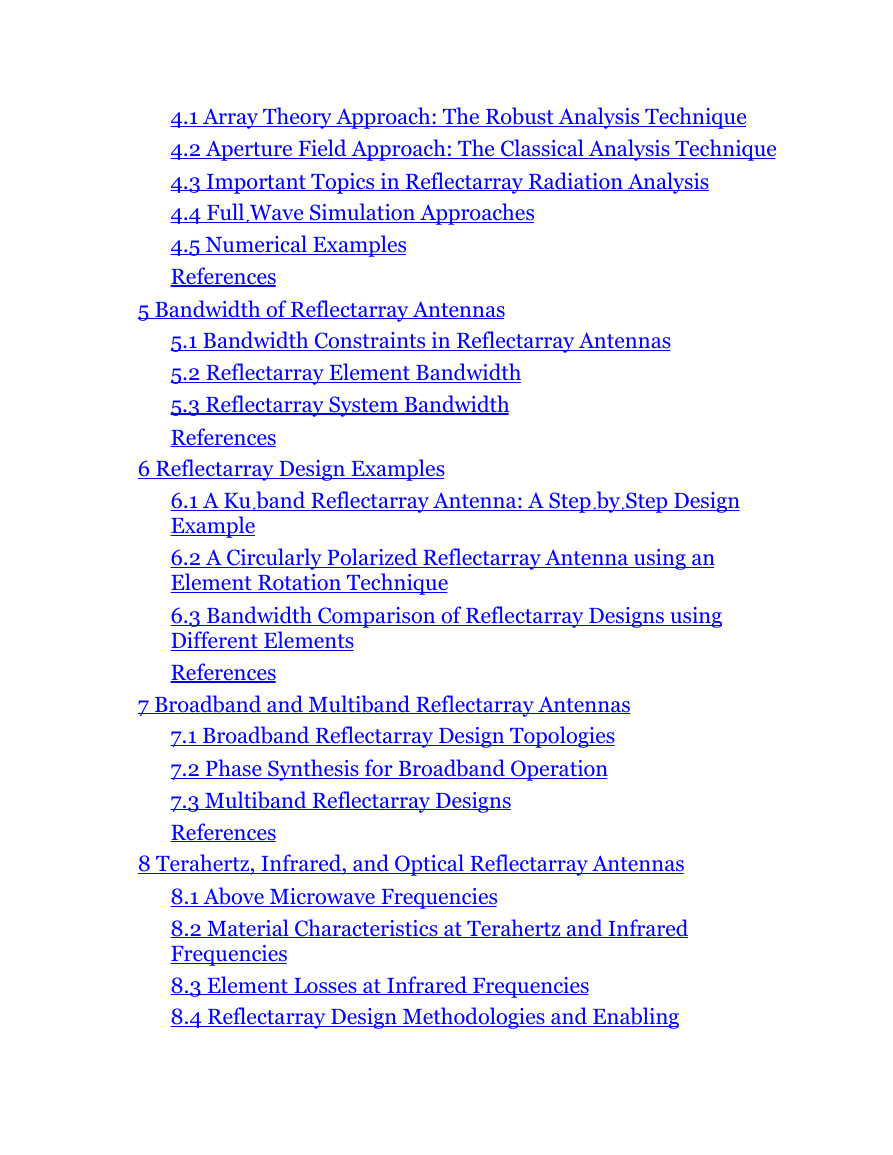
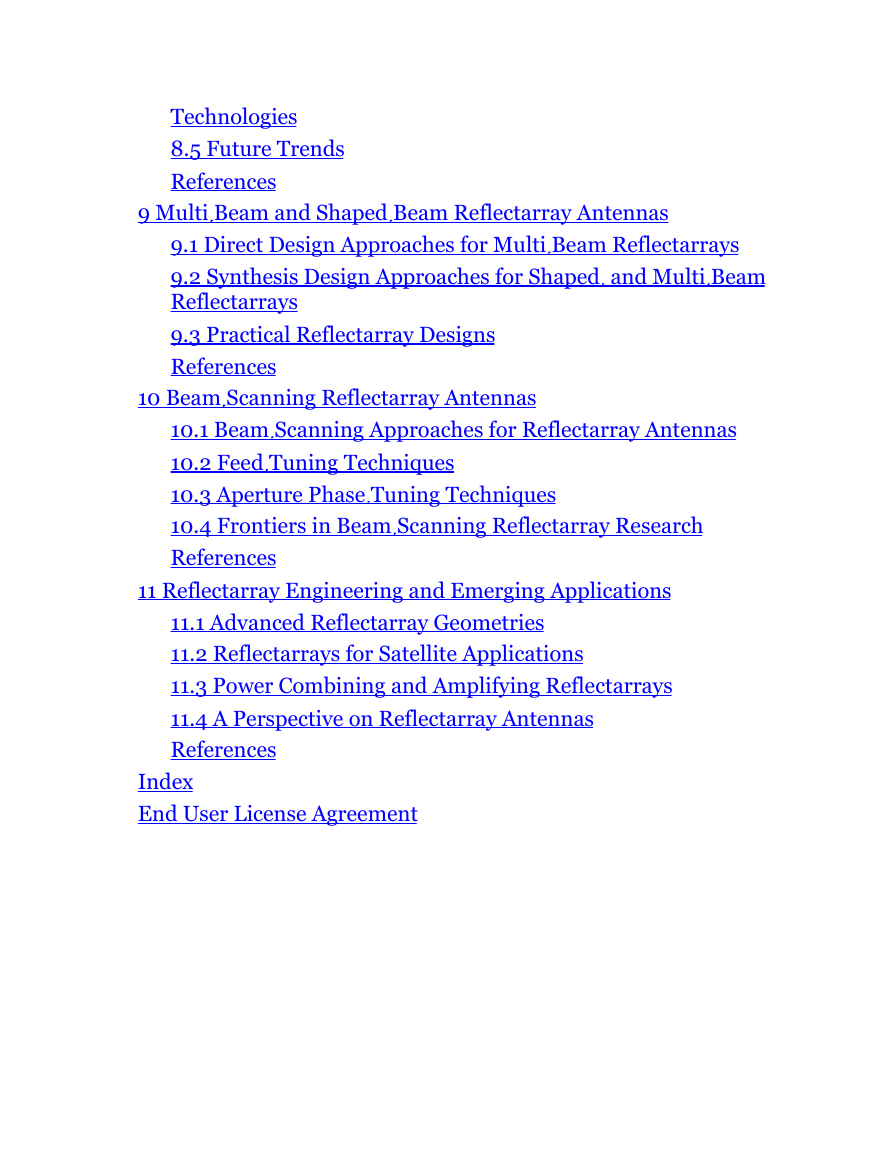
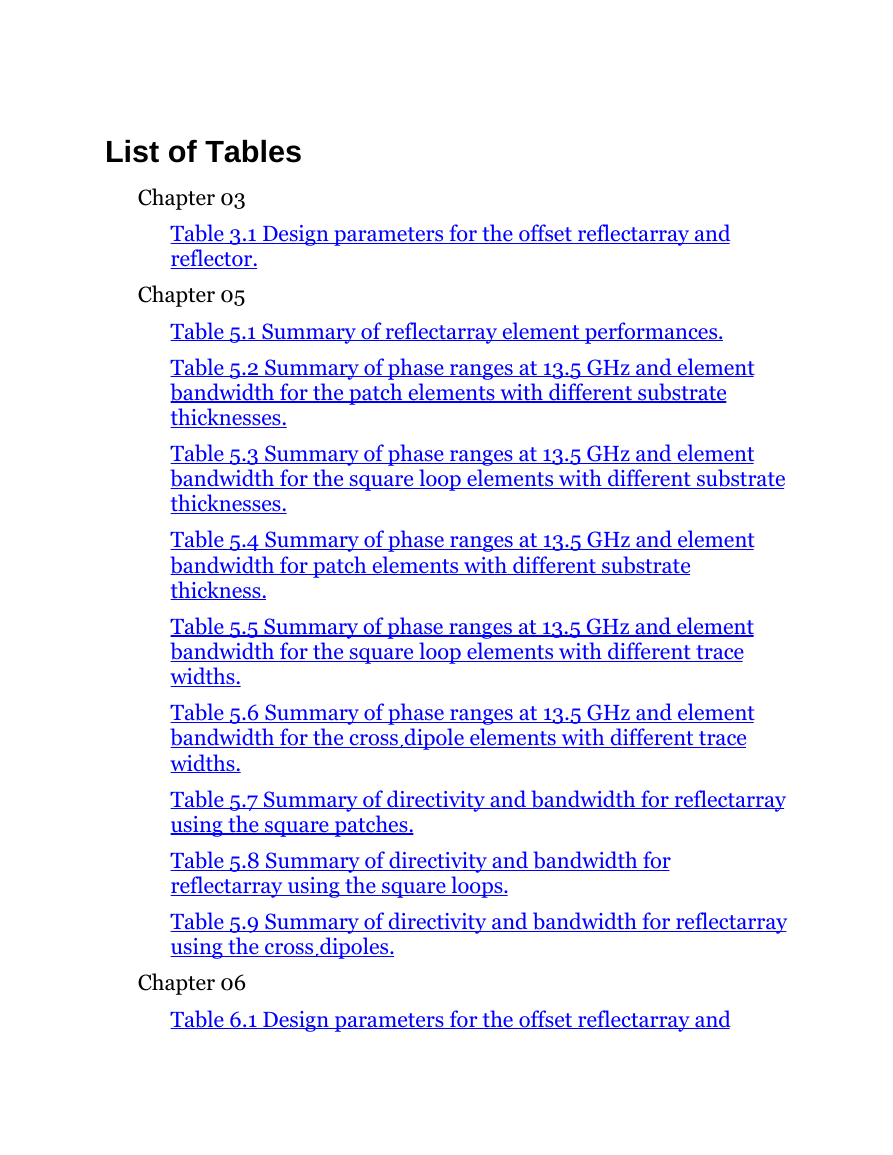
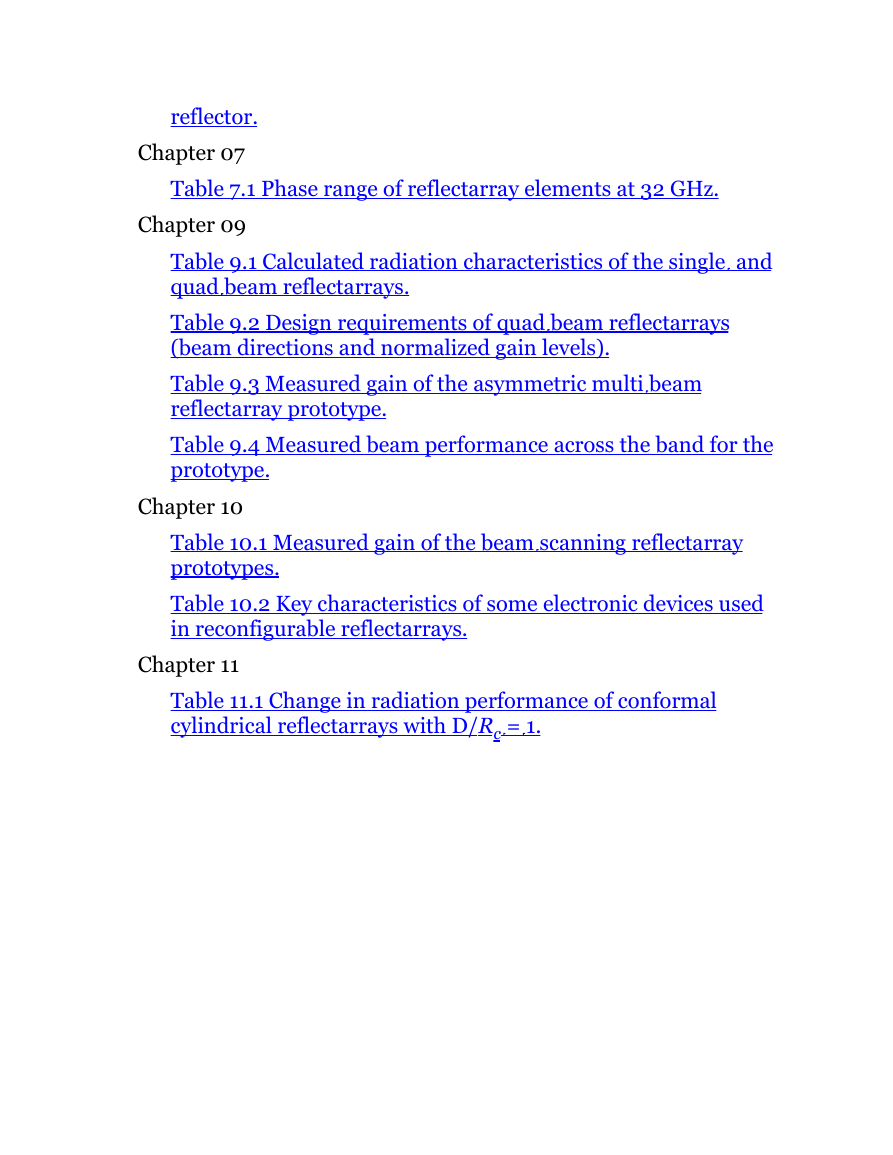
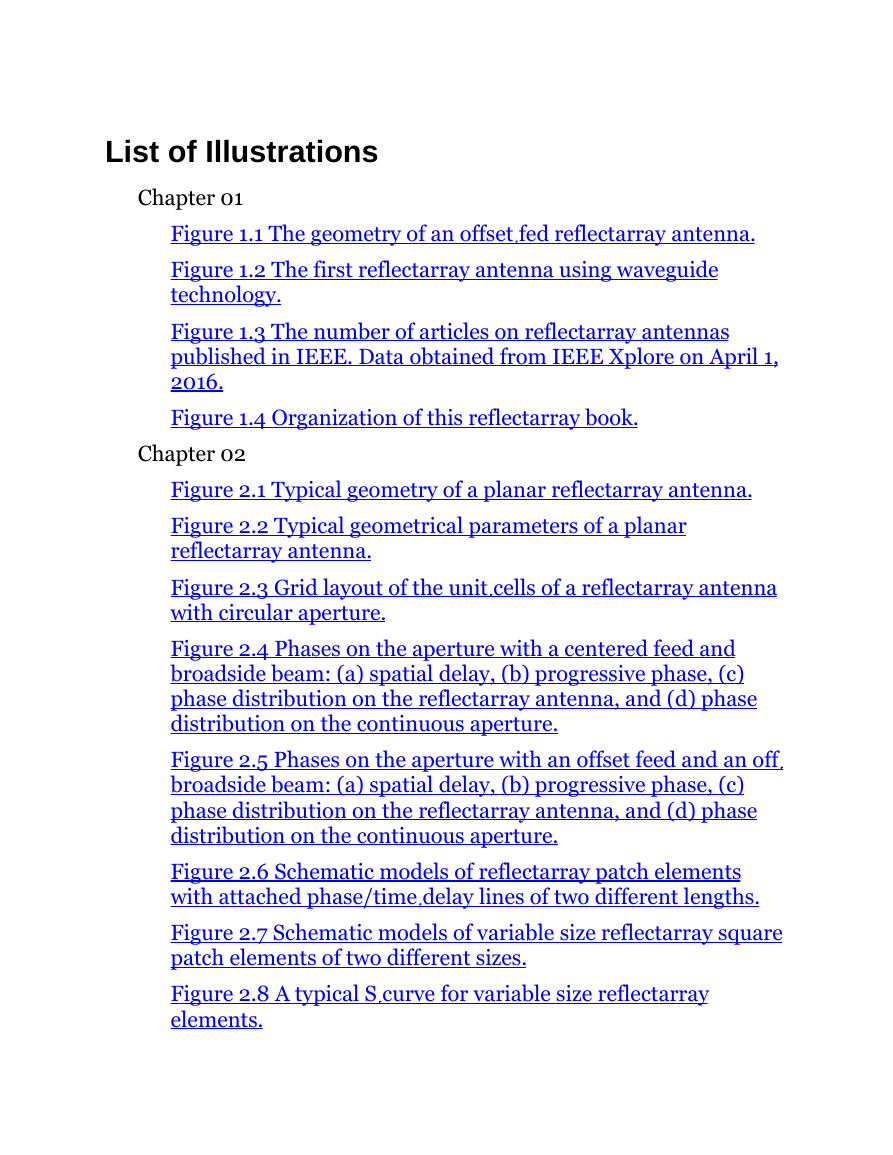
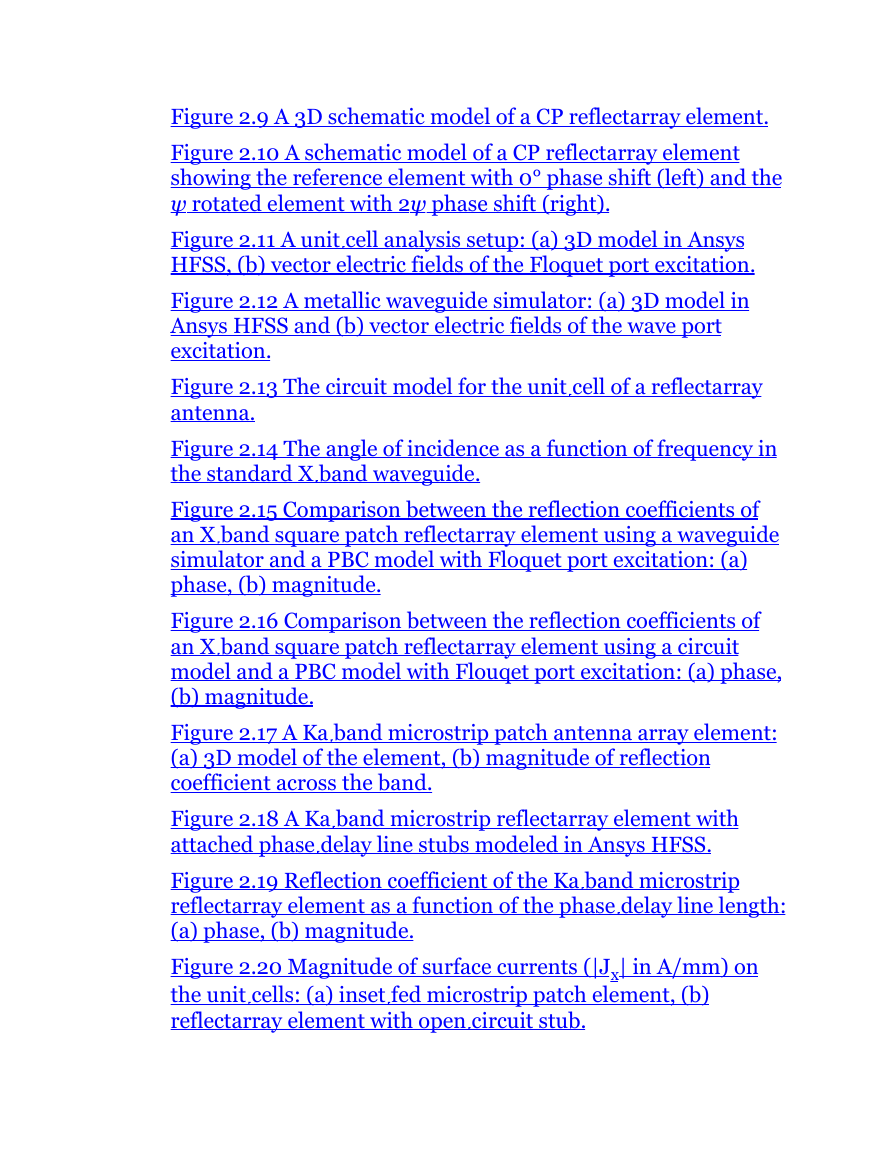








 2023年江西萍乡中考道德与法治真题及答案.doc
2023年江西萍乡中考道德与法治真题及答案.doc 2012年重庆南川中考生物真题及答案.doc
2012年重庆南川中考生物真题及答案.doc 2013年江西师范大学地理学综合及文艺理论基础考研真题.doc
2013年江西师范大学地理学综合及文艺理论基础考研真题.doc 2020年四川甘孜小升初语文真题及答案I卷.doc
2020年四川甘孜小升初语文真题及答案I卷.doc 2020年注册岩土工程师专业基础考试真题及答案.doc
2020年注册岩土工程师专业基础考试真题及答案.doc 2023-2024学年福建省厦门市九年级上学期数学月考试题及答案.doc
2023-2024学年福建省厦门市九年级上学期数学月考试题及答案.doc 2021-2022学年辽宁省沈阳市大东区九年级上学期语文期末试题及答案.doc
2021-2022学年辽宁省沈阳市大东区九年级上学期语文期末试题及答案.doc 2022-2023学年北京东城区初三第一学期物理期末试卷及答案.doc
2022-2023学年北京东城区初三第一学期物理期末试卷及答案.doc 2018上半年江西教师资格初中地理学科知识与教学能力真题及答案.doc
2018上半年江西教师资格初中地理学科知识与教学能力真题及答案.doc 2012年河北国家公务员申论考试真题及答案-省级.doc
2012年河北国家公务员申论考试真题及答案-省级.doc 2020-2021学年江苏省扬州市江都区邵樊片九年级上学期数学第一次质量检测试题及答案.doc
2020-2021学年江苏省扬州市江都区邵樊片九年级上学期数学第一次质量检测试题及答案.doc 2022下半年黑龙江教师资格证中学综合素质真题及答案.doc
2022下半年黑龙江教师资格证中学综合素质真题及答案.doc